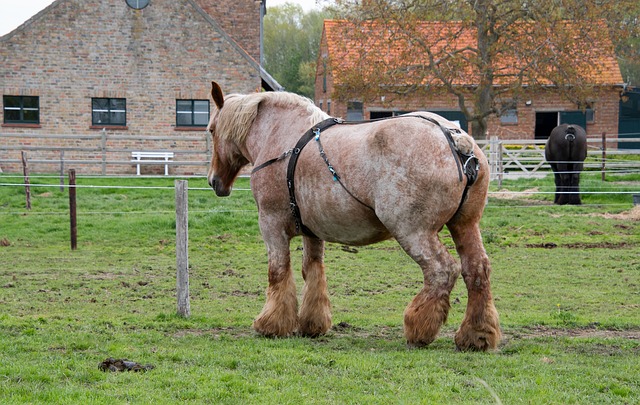The world of horses is a diverse and fascinating one, with many different breeds and types of equines to admire and appreciate. Among these, the draft horse stands out as a true giant, possessing incredible size, strength, and power. These magnificent animals have been used for centuries to pull plows, carts, and carriages, and their gentle nature and impressive stature make them a favorite of many horse lovers around the world.
In this article, we will explore the world of draft horses and introduce you to the 7 biggest and burliest horse breeds in the world. From the majestic Clydesdales to the rare and nearly extinct Suffolk Punch, these horses are sure to capture your imagination and leave you in awe of their incredible size and strength.
So, join us as we delve into the world of draft horses and discover the unique characteristics that make these gentle giants so special.
Biggest Horse Breeds
The aforementioned draft horse breeds, known for their large size and strength, are among the biggest horse breeds in the world and were traditionally bred for heavy work until the advent of machinery.
These breeds, such as the Clydesdales, Belgian Drafts, and Percherons, are often used for plowing fields, hauling heavy loads, and other farm work. However, as technology has advanced and machines have replaced horses in many tasks, their uses have shifted to more recreational and show purposes.
Despite their impressive size, these horses are known for their calm, docile, and willing temperaments, making them popular for horse training and riding. They also require more space and food than smaller breeds, and may need a special diet to maintain their health and stamina.
Breeding practices have also played a role in their size and strength, with breeders selecting for larger and more muscular individuals over time.
Today, these draft breeds continue to captivate horse enthusiasts with their impressive size and gentle personalities.
Draft Horse Characteristics
Draft horses are known for their calm, docile, and willing temperaments, making them popular for heavy work such as plowing fields and hauling cargo. They were bred for this purpose until the introduction of machines that could do the same work faster and more efficiently.
Draft horses are still used today for various tasks such as forestry work, carriage rides, and as show animals. Breeding practices for draft horses have changed over time, with a focus on creating larger and stronger animals.
Historical uses of draft horses vary by region, with some being used for agricultural work and others for transportation. Due to their size and history of heavy work, draft horses require a lot of space and may need a specialized diet to maintain their health.
Despite their decreased use in modern times, draft horses remain a beloved breed for their gentle nature and impressive strength.
Other Horse Size Measurements
When measuring horses, it is important to note that the unit of measurement is the hand, which equals four inches. However, other measurements are also used to assess a horse’s size and conformation. These measurements include the height at the withers (the highest point of the horse’s shoulder), the length of the horse’s body, and the girth (the circumference of the horse’s chest). These measurements provide insight into a horse’s build, which can indicate its athletic potential or health.
While the hand measurement has been used for centuries, metric conversions are now commonly used in many countries. However, the hand measurement is still used in some areas and for some purposes, such as in horse racing.
It is also important to note that individual horses within breeds may vary in size, so it is important to assess each horse individually and not solely rely on breed standards.
Frequently Asked Questions
What is the average lifespan of draft horses?
The average lifespan of draft horses varies depending on their breed and individual factors such as genetics, nutrition, and healthcare. Draft horse nutrition and common health issues should be monitored closely. Training draft horses for competition can provide benefits and challenges.
Can draft horses be used for riding or are they only for heavy work?
Draft horses, bred for heavy work, can also be trained for riding. Their calm and docile temperaments make them well-suited for novice riders. However, their large size and strength require proper training methods and specialized equipment.
What is the difference between a draft horse and a regular horse?
Draft horses differ from regular horses in size and purpose. They are bred for heavy work and have calm, docile, and willing temperaments. Training techniques and physical demands may also vary due to their size and use.
Are there any health concerns specific to draft horses?
Draft horses have unique nutritional needs due to their size and heavy work history. Overfeeding can lead to obesity and health issues. Regular exercise is vital to their health and preventing joint problems.
How do you properly care for and maintain the hooves of a draft horse?
Proper hoof care and maintenance for draft horses involves regular trimming techniques and shoeing solutions. It’s important to work with a knowledgeable farrier and monitor for any signs of lameness or discomfort.

